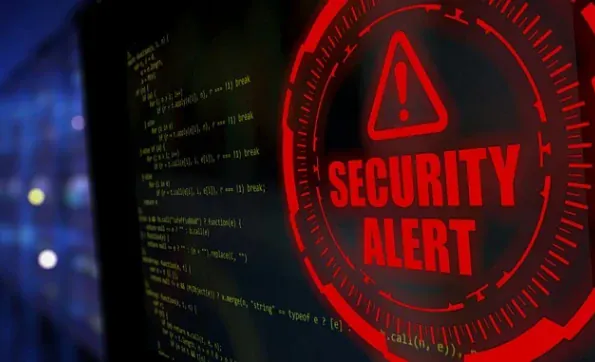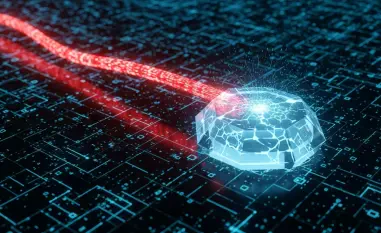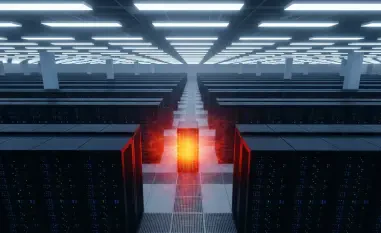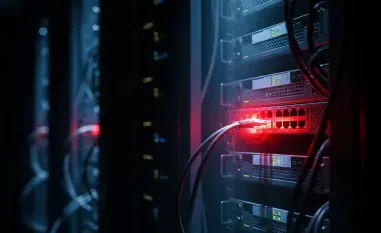The cybersecurity vulnerabilities plaguing critical infrastructure, particularly in the industrial sector and water utilities, have become a pressing concern. Recent incidents, such as the cyberattack on the Arkansas City Water Treatment Facility, underscore the urgency and gravity of these issues. This article delves into the state of cybersecurity for critical infrastructure in the United States, analyzing recent incidents, ongoing vulnerabilities, and the efforts made by various stakeholders to address the increasing threats.
The State of Cybersecurity in Critical Infrastructure
Vulnerabilities in the Industrial Sector
The industrial sector is particularly susceptible to cyberattacks due to poor cyber hygiene practices. The use of default passwords and internet-exposed systems makes it easy for cybercriminals to exploit these vulnerabilities. Brute-force attacks, though relatively unsophisticated, can have severe consequences, including significant financial costs and potential safety risks. The 2024 IBM Cost of a Data Breach report highlights a marked increase in the financial impact of data breaches in this sector, underscoring the gravity of these issues.
Industrial systems often operate on outdated software and hardware that may not receive regular security updates, further aggravating the risks. These legacy systems were not initially designed with internet connectivity in mind, making them inherently vulnerable when exposed online. Additionally, the complexity and scale of industrial operations often make comprehensive cybersecurity measures challenging to implement. Despite these challenges, the sector cannot afford complacency, as the consequences of a successful cyberattack could be catastrophic, disrupting essential services and endangering public safety.
Case Study: Arkansas City Water Treatment Facility
The cyberattack on the Arkansas City Water Treatment Facility on September 22 serves as a stark example of the potential disruption caused by such incidents. Although there was no immediate physical danger to the water supply, the attack necessitated a switch to manual operations. This incident highlights how cyberattacks can disrupt operational technology (OT) and industrial control systems (ICS), even when they do not compromise water quality or supply. This example is part of a broader pattern of similar attacks on water systems, underscoring their persistent vulnerability.
The attack on the Arkansas City Water Treatment Facility revealed several critical weaknesses in the infrastructure’s cybersecurity defenses. The perpetrators managed to penetrate the system using relatively simple techniques, suggesting that more sophisticated actors could have caused even greater damage. The facility’s reliance on outdated systems and lack of real-time monitoring exacerbated the situation, making it challenging to detect and respond to the threat swiftly. This case study serves as a cautionary tale for other utilities and infrastructure operators, emphasizing the need for robust cybersecurity protocols and investment in modern technologies.
Persistent Vulnerabilities in Water Utilities
CISA’s Warnings and Historical Data
The Cybersecurity and Infrastructure Security Agency (CISA) has repeatedly warned about the susceptibility of water and wastewater systems. The September 25 alert emphasized that these systems continue to employ outdated and unsecured OT and ICS environments, making them frequent targets for cybercriminals. Historical data and expert opinions within the article reinforce this recurring theme of inadequacy in current cybersecurity measures. Keith Lunden of Mandiant highlights the persistent risks due to the lack of dedicated cybersecurity personnel in many small- and mid-sized organizations.
Water utilities are critical to public health and safety, yet they often lack the resources and expertise to implement comprehensive cybersecurity measures. This vulnerability is further compounded by the interconnected nature of water infrastructure, where a breach in one component can have cascading effects on the entire system. CISA’s warnings underscore the urgent need for utilities to adopt a proactive approach to cybersecurity, including regular system audits, vulnerability assessments, and employee training programs. Without such measures, the sector will remain a prime target for cyberattacks, with potentially dire consequences for communities across the country.
Threats from Hacktivist Groups
Hacktivist groups, particularly those linked to nation-states, pose a significant threat to water utilities. The Cyber Army of Russia Reborn, tied to Advanced Persistent Threat 44, is specifically mentioned as exploiting weak cybersecurity postures in water systems that lack adequate defense resources. These groups capitalize on systemic gaps in cybersecurity, underscoring the need for more robust defensive measures.
Hacktivist groups often have political or ideological motivations, making them unpredictable and potentially more dangerous than financially motivated cybercriminals. Their attacks can be highly coordinated and sophisticated, leveraging the latest techniques and tools to breach defenses. Water utilities, with their critical role in public health and safety, represent lucrative targets for these groups, who may aim to cause widespread disruption or undermine public trust in essential services. The increasing involvement of nation-states in cyber warfare adds another layer of complexity, requiring utilities to adopt advanced, multi-layered security strategies to protect against a wide range of threats.
Efforts to Address Cybersecurity Challenges
State and Local Cybersecurity Grant Program (SLCGP)
Efforts to address these cybersecurity challenges are underway, with initiatives such as the State and Local Cybersecurity Grant Program (SLCGP) playing a pivotal role. The SLCGP, with its $280 million allocation for fiscal year 2024, aims to bolster the cyber resilience of state, local, tribal, and territorial governments, with a special focus on critical infrastructure like water utilities. This funding is intended to improve monitoring systems, patch vulnerabilities, and implement essential cybersecurity protocols such as multi-factor authentication and regular system audits.
The SLCGP also emphasizes the importance of collaboration and information sharing among different levels of government and private sector entities. By fostering a more coordinated approach to cybersecurity, the program aims to create a more robust and unified defense against cyber threats. Grants from the SLCGP can also be used to fund training and workforce development initiatives, addressing the critical shortage of skilled cybersecurity professionals in the sector. However, while the program represents a significant step forward, it is only one piece of the puzzle in building a comprehensive cybersecurity framework for critical infrastructure.
Cyberspace Solarium Commission (CSC) Recommendations
The Cyberspace Solarium Commission (CSC) provides a broader strategic framework for addressing cybersecurity challenges. Approximately 80% of the CSC’s recommendations have been implemented, though critical gaps remain. Identifying minimum security standards for essential entities and developing an economic continuity plan for cyber events are pivotal points still needing attention. This reflects a broader consensus that while significant progress has been made, the remaining challenges are substantial and require continued effort and collaboration.
The CSC’s recommendations also highlight the importance of public-private partnerships in enhancing cybersecurity resilience. Given that much of the nation’s critical infrastructure is privately owned and operated, effective collaboration between government and industry is essential for addressing vulnerabilities and responding to threats. The CSC advocates for the creation of incentives for private sector investment in cybersecurity, as well as the development of standardized frameworks and best practices. These measures, along with continued legislative and regulatory support, are vital for ensuring a secure and resilient infrastructure capable of withstanding the evolving cyber threat landscape.
The Need for Public-Private Collaboration
Challenges in Fostering Trust
Collaboration between the public and private sectors is critical, yet challenging. Senator Angus King, co-chair of CSC 2.0, articulates the difficulties in fostering trust between these entities, drawing parallels to past tensions between state officials and CISA. This discussion illustrates the complexity of securing critical infrastructure, which predominantly lies in private hands, against an evolving threat landscape.
Building trust requires transparent communication, mutual understanding, and a willingness to share information and resources. Private sector entities may hesitate to disclose vulnerabilities or breaches due to concerns about reputational damage or regulatory backlash. Conversely, government agencies must balance security needs with the protection of civil liberties and public interests. Overcoming these challenges necessitates the establishment of clear guidelines and protocols for information sharing and incident response. Additionally, regular joint exercises and simulations can help bridge gaps and foster a culture of collaboration and trust between public and private stakeholders.
Global Dimension of Cybersecurity Threats
The global dimension of the cybersecurity threat cannot be ignored. Incidents such as the compromise of over 260,000 network devices by China-linked hackers exemplify the sophistication and scale of contemporary cyber threats. These attacks, targeting ISPs and managed service providers through vulnerabilities in software, highlight the heightened risk environment and demand advanced and continually evolving countermeasures.
The interconnectedness of digital and physical infrastructures means that a cyberattack in one part of the world can have far-reaching consequences. Global supply chains, critical infrastructure, and communication networks are all vulnerable to sophisticated cyber threats, requiring international cooperation and coordinated responses. Sharing threat intelligence and best practices across borders is essential for developing a unified front against cyber adversaries. As cyber threats continue to evolve, so must the strategies and technologies employed to detect, prevent, and mitigate them. Governments, industries, and international organizations must work together to strengthen the global cybersecurity landscape and protect critical infrastructure from emerging threats.
Conclusion
Cybersecurity vulnerabilities affecting critical infrastructure, especially within the industrial sector and water utilities, have emerged as a significant concern. The urgency of these issues is highlighted by recent incidents like the cyberattack on the Arkansas City Water Treatment Facility. Such events underscore the pressing need for addressing the cybersecurity challenges that plague vital public services. This article takes a closer look at the current state of cybersecurity for critical infrastructure in the United States, examining recent incidents which expose ongoing vulnerabilities. It also highlights the efforts made by various stakeholders, including government agencies, private companies, and cybersecurity experts, to counteract the growing threats. These collaborative efforts aim to bolster defenses, enhance incident response strategies, and implement robust protective measures to safeguard essential infrastructure. The increasing interconnectivity and reliance on digital systems in critical sectors make them prime targets for cyberattacks, amplifying the need for continued vigilance, innovation, and cooperation in the fight against cyber threats.













